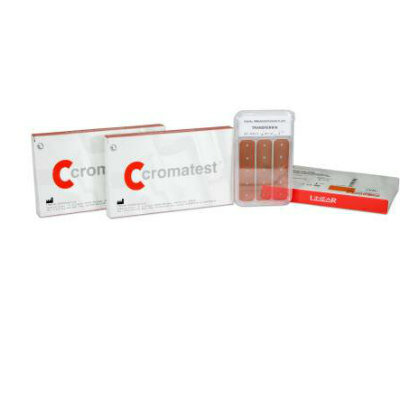Imaging Technique Shows Complex Microbial Interactions
By LabMedica International staff writers
Posted on 26 May 2011
Researchers using a new form of imaging mass spectrometry were able to visualize multiplex microbial interactions. Posted on 26 May 2011
Microbes must be able to communicate, to be able to interact with its environment and with others in order to thrive. This cellular chatter comes in the form of signaling molecules and exchanged metabolites that can have effects far larger than the organism itself.
Most of what is known about how microbes communicate with each other is the result of indirect observation and measurements. Until now, there has been no general or informative technique for observing the manifold metabolic exchange and signaling interactions between microbes, their hosts, and environments.
In a study published May 16, 2011, in the journal Angewandte Chemie, researchers from the University of California, San Diego (UCSD; USA) and the Scripps Institute of Oceanography (La Jolla, CA, USA) reported the mass spectrometry approach clearly visualizes multiplex microbial interactions. "Being able to better see and understand the metabolic interplay between microbial communities and their surrounding biology means we can better detect and characterize the molecules involved and perhaps discover new and better therapeutic and commercially viable compounds," said Pieter C. Dorrestein, PhD, associate professor at the UCSD Skaggs School of Pharmacy and Pharmaceutical Sciences and the article's senior author.
Dr. Dorrestein and colleagues used matrix-assisted laser desorption ionization (MALDI) mass spectrometry, a comparatively new application that creates two-dimensional, spatial images of microbes and biomolecules--among them proteins, peptides, sugars--too fragile to endure other mass spectrometry techniques.
As their first subject, the scientists gathered marine microbial assemblages scraped off the surfaces of a barnacle attached to the Scripps Pier. The resulting images, generated after careful preparation, offered new insights. "One of the things we see that we haven't with other techniques is that the dialog between microbes is multiplexed," said Dr. Dorrestein. "There are many conversations going on at the same time, many changes happening at the same time. We see competition for resources such as iron, but also that microbes secrete molecules that alter the phenotypes of neighboring organisms."
Dr. Dorrestein noted that the ability to better visualize the immensely complex environment of microbial communication is changing the ways scientists examine how two or more microbes are studied and ultimately engineered. "Rather than enumerating which microbes are present, as in many metagenomic efforts, our current approach is anticipated to address the why, when, and how questions of microbial interactions instead of just the who," Dr. Dorrestein concluded.
Related Links:
University of California, San Diego
Scripps Institute of Oceanography












